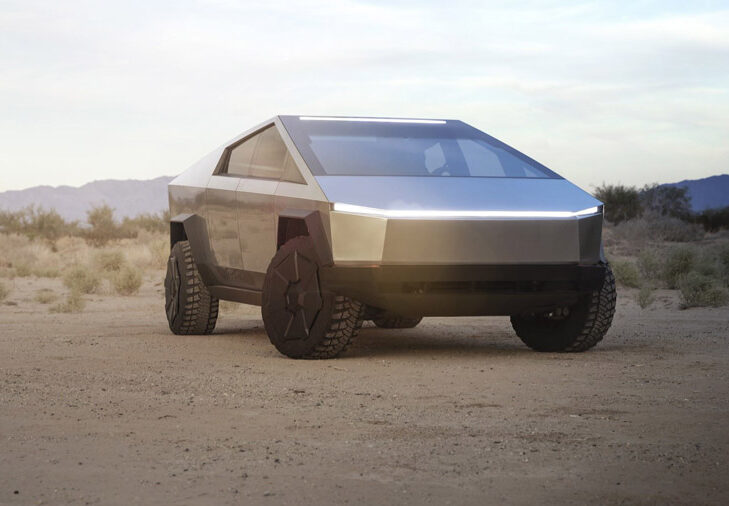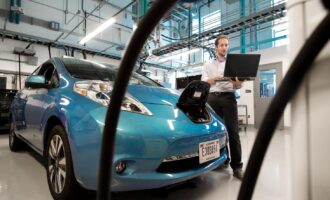
Covid-19 response will influence the pace of transition to electric vehicles
The global fleet of electric cars surpassed seven million in 2019, a 40% increase in total volume, according to figures published in the International Energy Agency’s (IEA) Global EV Outlook 2020. In 2019, 2.1 million new electric cars were sold as consumers increasingly opted for an expanding range of climate-conscious, energy-efficient vehicles. Battery Electric Vehicles (BEV) comprised 67% of the world’s electric car fleet in 2019.

Electric cars represented 2.6% of global car sales and now account for 1% of global stock. China continues to be the spearhead, delivering 47% of worldwide sales in 2019. Twenty countries have now achieved market shares above 1%, according to The Outlook.
IEA is an autonomous intergovernmental organisation with a mandate on effectual energy policy, and a particular focus on energy security, economic development, and environmental protection. IEA’s annual Global EV Outlook provides an overview of recent electric mobility developments including policy updates, charging infrastructure, emissions impacts, and battery technology. The Outlook also provides projections on electric car sales to 2030.
The report’s headline numbers paint a promising picture. Though, the raw numbers mask what has been a significant drop in the growth of electric vehicles. Since 2016, annual sales growth rates of more than 30% have been attained. Thus, 2.1 million new vehicles last year equate to a mediocre growth rate of 6%, indicating a significant slowdown in electric car uptake.
Falling growth rates have been attributed to an overall contraction in the car market, reductions in subsidies in key markets such as China and the United States, and consumer expectations of further technology improvements that are persuading them to wait for newer models.

There has been a notable reduction in government spending on electric car incentive schemes as well. Government expenditure contracted by 15% in 2019. China reduced purchase subsidies by up to a half, part of a phase-out of subsidies that began in 2016. Many countries are shifting from direct subsidies to a policy approach to electric vehicle adoption. China’s move foreshadowed a significant drop in electric car sales towards the back half of the year. The U.S. experienced a 10% drop in electric car sales, though it should be noted that 2018 figures included a surge in deliveries of the new Tesla Model 3. The U.S. federal tax program, that applies tax credits to electric car sales up to 200,000 units, also ran out for some manufacturers. Declines in these key markets outshone a 50% sales increase in Europe last year.
In 10 years, there will be 245 million electric cars in the world vehicle parc. This, according to a scenario outlined in the IEA Global EV Outlook. The Sustainable Development Scenario (SDS) is intended to achieve a sharp reduction in pollutants and aligns with the climate goals of the Paris Agreement. SDS also incorporates the goals of EV30@30 Campaign, which sets a collective goal of reaching a 30% sales share for electric vehicles by 2030 for participating countries. Adding 238 million more electric cars to the global fleet requires sustained annual growth of 36% over the next 10 years. It will also result in the displacement of 4.2 million barrels per day (mb/d) of gasoline and diesel fuel.
Is this scenario realistic when you consider slowing vehicle sales growth and the potential impact of the Covid-19 pandemic? Some experts believe the repercussions of a deep global recession could linger for many years to come. A report on “The Impact of Covid-19 on the Energy Transition” by DNV GL projects that the pandemic will reduce global gross domestic product (GDP) in 2050 by 9%, relative to pre-pandemic levels, with an associated reduction in energy demand of 8% in the same period. Ominously, for the transport sector, DNV GL expects transport energy use will never again reach 2019 levels due to lasting behavioural changes linked to Covid-19 — such as reduced commuting habits and less office work.

IEA’s “Stated Policies Scenario” (SPS) incorporates existing government plans. The scenario estimates electric cars will account for 7% of the global fleet, or 140 million total vehicles (excluding two- and three-wheelers), in 2030. This scenario would displace around 2.5 mb/d of oil products. Electric mobility will play a vital role in reducing greenhouse gas emissions and achieving our global climate targets. However, there has been considerable debate over the merits of vehicle electrification versus internal combustion when considering lifecycle emissions. IEA’s recent report may have ended that argument.
In the SPS, IEA claims comparative lifecycle greenhouse gas emissions over the ten-year lifetime of an average midsize car are almost half the equivalent emissions of a fleet of internal combustion engine cars, in 2030. In the SDS, emissions reduction is up to two-thirds. Decarbonising fuel used in a vehicle remains the biggest opportunity for lifecycle emissions reduction in all powertrains, the IEA says.

The Global EV Outlook was released in June 2020, thus it may be too early to accurately reflect the impact of Covid-19. At the time of writing, cases are increasing by 200,000 per day, and restrictions have severely impacted mobility patterns and vehicle sales. The health crisis has hit automakers particularly hard, with most major manufacturers halting production for some period. Nine million fewer cars were sold in January to April 2020 compared to the same period the previous year. IEA predicts the passenger car market will contract by 15% this year, relative to 2019.
Covid-19 is likely to generate long-lasting impacts on the transport sector. The good news for electric vehicle manufacturers is that the IEA believes the EV market may be more resilient than overall car sales. The agency estimates that EV sales will remain broadly at 2019 levels and will account for 3% of global car sales in 2020.
However, the magnitude of the impact caused by this global pandemic remains uncertain, as is the pace of rebound and the effects of behavioural change. IEA’s report highlights a range of issues that may influence commuting and vehicle sales such as the rate of easing of confinement measures, increases in teleworking, the willingness and ability of consumers to purchase new cars during uncertain times, low oil prices, and the ever-present risk of a second wave of Covid-19.

Carefully considered government policy and investment are vital in shaping the pace of transition to electric vehicles in the 2020s. Many industry voices are calling for a recovery effort that focuses on vehicle efficiency with targeted measures to support electrification.
It is generally understood that government support for electric car purchases can only be transitional, and that support will phase out as sales volumes increase. However, the IEA report flags concerns that governments may relax fuel efficiency standards to aid struggling automakers, or redirect support measures to free up funds for use elsewhere, resulting in a decline in EV sales. It has not happened so far, the IEA says. Though, it is worth noting the recent rollback by President Donald Trump of U.S. fuel economy standards put in place by the previous administration.
While China and the U.S. have made substantial reductions to purchase subsidies in 2019, some countries have implemented new or enhanced incentives, such as Germany, Italy and France. China has extended its subsidy scheme through to 2022, albeit at a reduced rate, and also encouraged cities to relax car permit quotas to provide a stimulus for the auto market.
The Global EV Outlook also emphasises that the current low oil prices provide a unique opportunity to phase out support for fossil fuels in countries where fuel subsidies remain prevalent.
echo '






